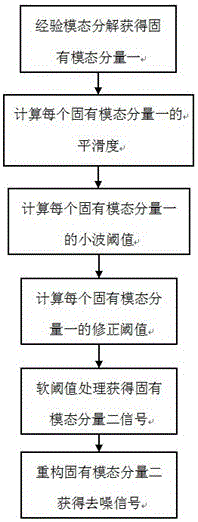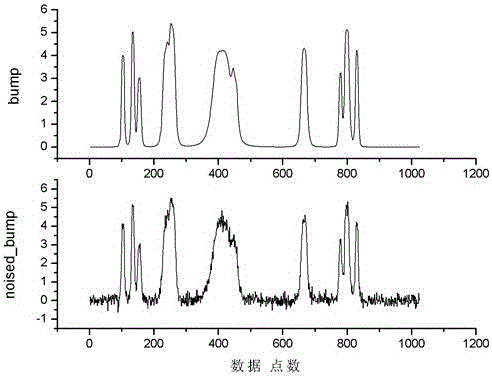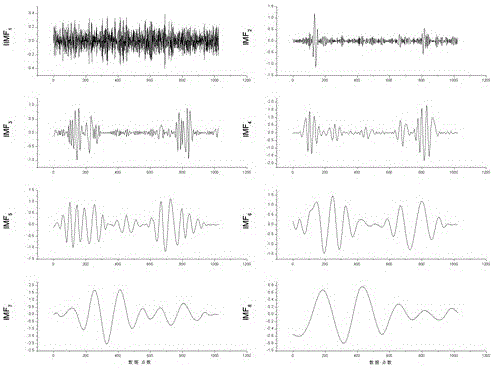An Empirical Mode Decomposition Denoising Method Based on Modified Wavelet Threshold
An empirical mode decomposition and wavelet threshold technology, applied in the field of signal de-noising, can solve the problems of low signal-to-noise ratio, unstable de-noising effect, easy loss of useful signals, etc. Effect
- Summary
- Abstract
- Description
- Claims
- Application Information
AI Technical Summary
Problems solved by technology
Method used
Image
Examples
Embodiment Construction
[0033] The technical solution of the present invention will be described in further detail below in conjunction with the accompanying drawings.
[0034] Such as figure 1 As shown, the flow process of the empirical mode decomposition denoising method based on the modified wavelet threshold of the present invention includes: first, the original signal is subjected to EMD to obtain a limited number of natural mode components from high to low and a remainder; then calculate The smoothness of each natural mode component one; then use the wavelet threshold method to calculate the threshold value of each natural mode component one; modify the threshold calculated by the wavelet method according to the smoothness and the serial number of the natural mode component one; use the corrected Thresholding acts on each intrinsic mode component one by one; finally the denoised signal is obtained by reconstruction.
[0035] Below as figure 2 The signal noise_bump, SNR=20 after the sample si...
PUM
 Login to View More
Login to View More Abstract
Description
Claims
Application Information
 Login to View More
Login to View More - R&D
- Intellectual Property
- Life Sciences
- Materials
- Tech Scout
- Unparalleled Data Quality
- Higher Quality Content
- 60% Fewer Hallucinations
Browse by: Latest US Patents, China's latest patents, Technical Efficacy Thesaurus, Application Domain, Technology Topic, Popular Technical Reports.
© 2025 PatSnap. All rights reserved.Legal|Privacy policy|Modern Slavery Act Transparency Statement|Sitemap|About US| Contact US: help@patsnap.com



